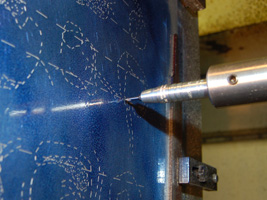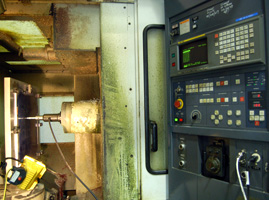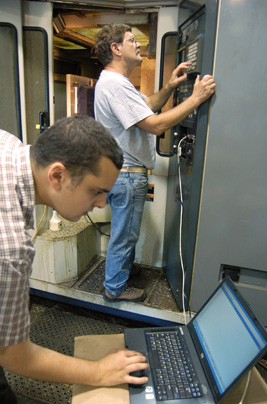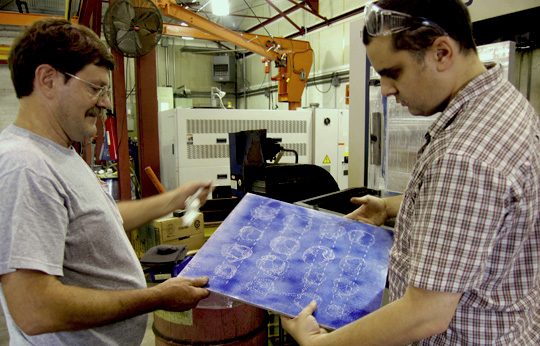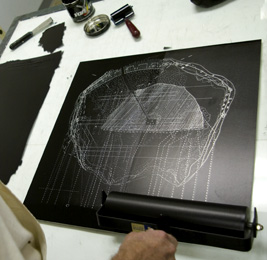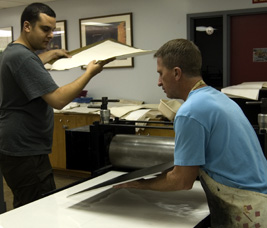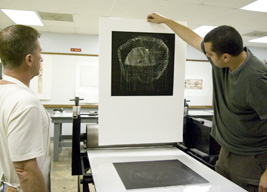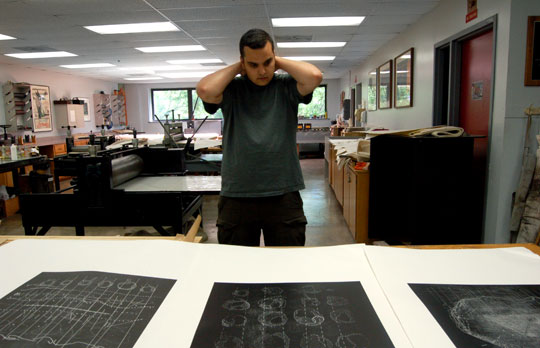
CELESTIAL WORKSHOPS PROCESS
The Digital Relief Process
|
|
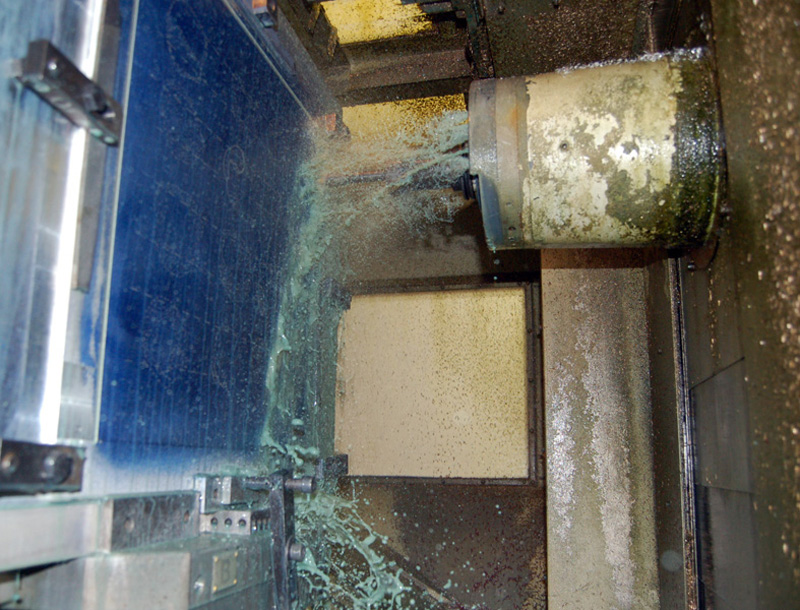 |
About the Digital Relief Process
Since my residency at the Kala Art Institute in 2004, I have been experimenting with incorporating printmaking into my art practice. I find that there are a great number of similarities among printmaking processes and the techniques that I use in creating digital images. Initially inspired by the resonance between handsetting lead type for letterpress and using programming to control individual pixels for black and white animations on a Gameboy Advance, I began to experiment with developing a hybrid process combining custom drawing software, industrial machine control and traditional printmaking techniques. The Digital Relief Process is the result of these experiments. |
|||||||
 |
|||||||
| The Digital Relief Process provides a round-trip path from the tangible through the intangible; drawing and sketching gestures made by hand are recorded, amplified, translated and finally are re-performed during the cutting of printing blocks within plastics, hardwoods and metals by way of computerized numerical controled (CNC) milling machinery. Commonly, designers and engineers will utilize computer-aided drafting programs to interface with CNC Machinery. The end result is incredibly precise, mechanical, industrial. However, the visual grammar and syntax of the drawings that I want to achieve is more immediate and organic: I want to be able to sketch with the same speed that I would with pen and paper as though taking field notes. To enable this process, I developed a suite of custom drawing software tools that provide a linkage between my Wacom drawing tablet and CNC mills. Luckily, almost all CNC mills can be controlled by a common set of instructions known as GCODE, which is written as a text document. It is common for machinists to write GCODE control documents by hand, even for complex parts. For the drawings that I was planning, some intermediary was required - and the glue between all of these individual components is the suite of custom drawing software tools that I have built. To create the drawing software, I decided to use the Processing programming language as I have been working with it for several years now and have found that beyond being a great teaching tool, it offers precisely the degree of flexibility and extensibility required for tool building as well as a host of resources from an active development community. This freely available programming language offers a software prototyping and development environment that keeps with the spirit of experimentation and organic development; even within Processing itself, its files are referred to as sketches. After months of initial tests on my own CNC equipment, I am grateful for the assistance I received during a 2007 summer residency at the Prairie Center of the Arts, where I was provided full access to master machinists and industrial-scale equipment. The assistance and expertise of the individuals at the Prairie Center helped me make significant improvements to my custom drawing software and overall approach. Numerous individuals have assisted in me in advancing this project, and I am deeply thankful for the collaborative efforts of all who have been involved. Special thanks to Master Etcher and Printer Oscar J. Gillespie of the Cradle Oak Press at Bradley University for all of his help, especially for his generous support of time and energy that made the printing of these images possible. | |||||||
| Prairie Center of the Arts | |||||||
|
|||||||
| Cradle Oak Press at Bradley University | |||||||
| |||||||
